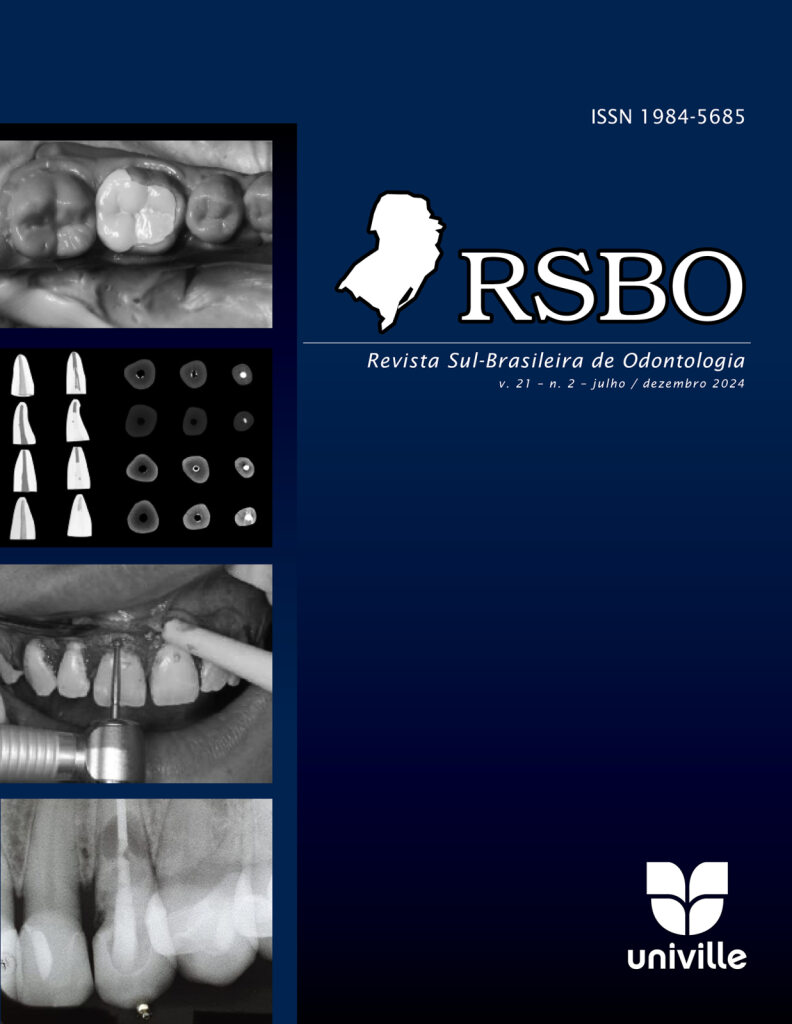Comparative analysis of the effectiveness of instrumentation with manual stainless steel and NiTi files in the endodontic treatment
DOI:
https://doi.org/10.21726/rsbo.v21i2.2515Palavras-chave:
root canal preparation; nickel-titanium; root canal obturation.Resumo
The aim of this study was to assess the effectiveness in instrumentation and the main differences between the manual systems K and M. Material and methods: Forty Type IV Vertucci standardized lower molars, considering the degree of curvature, were divided into 2 groups (n=10): M Files and K-File Files. After biomechanical preparation, the teeth were filled using the Tagger Hybrid technique. Digital radiographs were taken in the buccolingual and mesiodistal directions, and the quality of the filling was determined by three calibrated and blinded evaluators using a 4-point scoring system. The instrument fracture index was also recorded. The obtained data were subjected to Mann-Whitney tests (p<0.05). Results: In the analysis conducted by experienced professionals, a higher radiographic quality of obturation was observed in the M file group compared to the K-file group (p<0.05). Regarding the perception of undergraduate students regarding the difficulty of procedures, a greater difficulty was observed in preparing molars with K-Files compared to M Files (p<0.05). A higher percentage of fractured K-Files was observed compared to M Files. Conclusion: M Files provided less difficulty in preparing molars for undergraduate students, had a lower incidence of fracture, and favored better radiographic quality of obturation.

